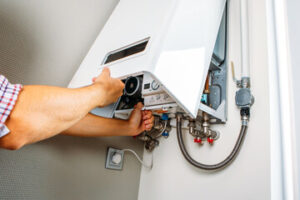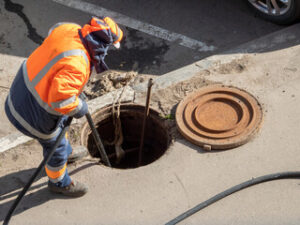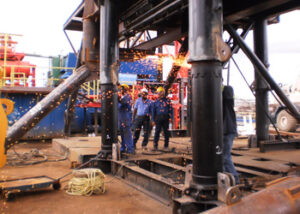Denver Water Heaters are one of the most vital appliances in our homes, yet they tend to be taken for granted – until they stop working. Having a hot shower or washing machine is essential, so choose a model with a long warranty.

Storage models are often insulated to keep energy costs down, while hybrid water heaters can feature digital displays that monitor tank and collector temperatures. These units require regular maintenance and cleaning.
Many homes have traditional tank storage water heaters that heat cold water and store it in an insulated tank until needed. Tanks are usually powered by natural gas, propane or electricity. The heating mechanism (burner or element) stays on continuously, cycling through to warm the water to a preset temperature and then maintaining that temperature in the insulated storage tank. This cycle of heating and reheating wastes energy, even when no one is using hot water in the home, an amount known as standby loss. The insulated tank slows this loss, but it cannot eliminate it entirely. Conventional tanks also take up a large space in a mechanical or laundry room and can run out of hot water during high demand periods if they are not sized correctly.
To avoid this problem, it’s important to understand the size of your household water demand so you can size your conventional water heater appropriately. Start by adding up the gallons per minute of each fixture in your home that require hot water. Multiply that number by your peak hour demand to get an estimate of the gallons per day your household uses. Then use the Energy Guide label on your existing water heater to find out its capacity or first-hour rating (FHR). You should try to match this FHR to your household’s peak hour demand.
Another way to reduce your energy consumption is to install a programmable thermostat that will turn the water heater off at times when you’re not in the house, or when nobody needs hot water. This will save you a great deal of energy, as well as money on your utility bills.
Finally, you can reduce the energy your water heater consumes by performing preventative maintenance annually. A professional technician can inspect and clean the burner, anode rod, pressure relief valve, drain valve, and more to ensure that these components are in good working order. They can also flush the system to remove accumulated minerals and sediment, which can increase efficiency and prolong the life of your tank water heater.
Tankless Water Heaters
Tankless water heaters, or demand-type or instantaneous water heaters, use energy only when hot water is needed and they eliminate the standby energy losses of storage-type units. For that reason, they can save energy and money in homes with high energy costs. These heaters also have a long lifespan and can last 20 to 30 years or more, and they offer significant space savings, because there is no large water heater tank taking up room in the garage or basement.
These heaters heat water on demand by running cold water through a pipe into the unit, where the water is heated in an electric or gas-powered heating element, then through a valve to a faucet in the home. The water heaters can be installed at point-of-use throughout the house, as in a bathroom or kitchen, or they can be centralized whole-house models that provide hot water to multiple fixtures, including laundry machines and dishwashing sinks.
A tankless water heater’s gallons-per-minute (GPM) output capacity determines how many hot-water demands it can meet simultaneously. For example, a household that has a lot of simultaneous users will need more gallons-per-minute than a single family of two.
Unlike traditional tank water heaters, which can spill gallons of water if they leak, harbor Legionella bacteria and tip over in an earthquake, these heaters are safer. They don’t run the risk of a fire and aren’t prone to corrosion or scale buildup like the tanks. They also don’t produce dangerous carbon monoxide emissions or need a venting system, and they don’t require annual draining as tank-type water heaters do.
Installing a tankless water heater may require a retrofit in older homes because their existing piping and gas lines weren’t designed with tankless models in mind, and upgrading the electricity or gas service to accommodate the new model can be expensive. A professional plumber or electrician is necessary to ensure the installation complies with safety codes for leak-free water, venting and combustion.
A tankless water heater can cost more upfront than a conventional tank-type heater, but homeowners can recoup that initial investment in just a few years due to the higher energy efficiency of these systems. In addition, homeowners who switch to a tankless heater can cut their yearly water-heating bills by about 40 percent or more.
Solar Water Heaters
Solar water heaters are a great alternative to traditional water heating systems. They offer several benefits including significantly lower energy costs, reduced reliance on non-renewable fuels, and decreased greenhouse gas emissions. In addition, they have a long lifespan and minimal maintenance needs making them an excellent, long-term investment for homeowners in sunny areas.
Solar hot water systems have several different configurations, but two common types are passive and active. Passive systems use a storage tank and collectors that allow for the sun’s heat to transfer to the water. The resulting heated water is then used for household plumbing needs. Active systems have a pump that circulates the water through the system and into your home.
In either type of solar hot water system, a backup system is often necessary for cloudy days or increased demand. A conventional storage water heater provides backup, or the system may be packaged with a tankless or demand-type water heater. In addition, a solar electric (PV) system can be added to the water heater in order to provide electricity for other household appliances.
When choosing a solar hot water system, be sure to choose a qualified contractor who is licensed and insured. A professional will be able to recommend the best options for your particular situation and ensure that the installation is done properly. They can also help you explore additional energy-saving strategies and equipment, such as photovoltaic solar power or wind turbines.
The most important thing to keep in mind is that solar hot water systems only heat your household’s water. They do not produce electricity or any other type of energy for your household. Therefore, if you want to power your appliances with renewable energy, you will need to install an additional photovoltaic solar power system and combine it with a water heater.
Solar water heaters are a great way to reduce your home’s energy consumption and help protect you against fluctuating energy prices and supply disruptions. They are a great alternative to traditional electric or natural gas water heaters and can be combined with other energy-saving devices and systems for even greater savings.
Combination Water Heaters
If you’re a builder looking for an energy efficient water heater solution for your new construction project, look no further than a combi boiler. A combination heating boiler combines both the space and hot water heating functions in one appliance, saving you time and money on installation. This is a popular option in Europe and the United Kingdom, where it has been in use for decades. A comparatively new technology in the United States, combi boilers are gaining popularity because of their energy efficiency and cost savings.
Space Savings
Combi boilers do not require a separate water tank, so they take up less floor space than traditional heaters. This means they can be installed in small spaces such as a utility room or in the closet under the stairs. The smaller footprint makes combi boilers a great choice for homes or apartments with limited storage space.
Instant Hot Water On Demand
Combo boilers operate similarly to tankless units, delivering hot water on demand as you need it. This can save you significant energy and money, especially if you have multiple people in your household using the shower, washing machine, dishwashing machine, or other appliances simultaneously.
The high operating efficiency of combi boilers also means they conserve fuel by only using the energy needed to heat your home or provide hot water to your fixtures. This can help you reduce your energy bill significantly over the course of a year.
While a combi boiler can be the perfect water heater for your home, it’s important to note that these appliances are not designed to handle very high demands for hot water. If you have a very large rain shower head or a jacuzzi style soaking tub, your contractor may recommend you consider a tank-style water heater instead.



